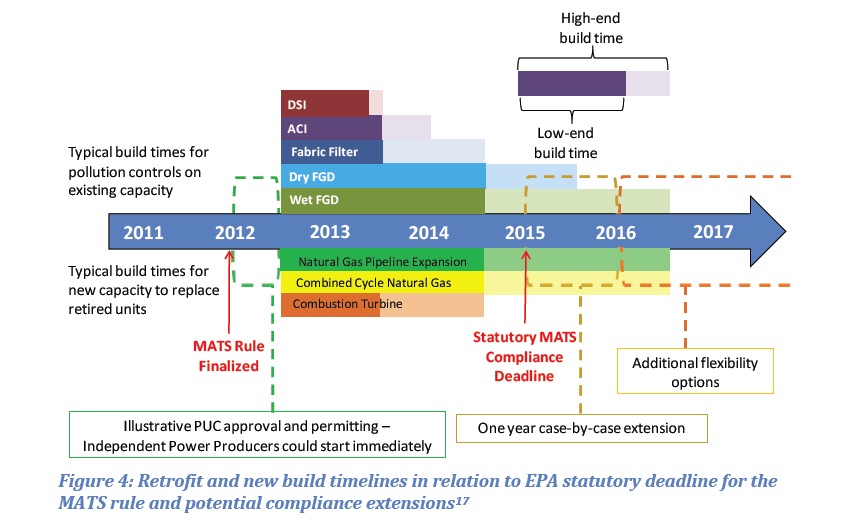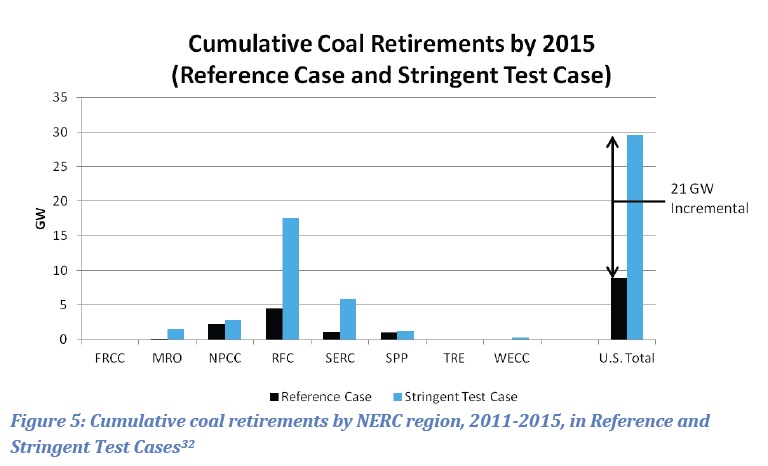US DEPARTMENT OF ENERGY
Executive Summary
This report presents the results of an independent assessment by the U.S. Department of Energy (DOE) of the adequacy of U.S. electric generation resources under air pollution regulations being finalized by the U.S. Environmental Protection Agency (EPA). This report does not estimate the economic impacts of EPA regulations, nor does it provide detailed reliability assessments that planning authorities and other stakeholders will need to conduct to ensure deliverability of power and grid reliability during implementation of EPA rules.
This report considers two EPA regulations, the Cross-State Air Pollution Rule (CSAPR) and the Mercury and Air Toxics Standards (MATS), that are widely expected to have the greatest impact on the electric sector between now and 2015.1
In some cases, compliance with the new rules, particularly CSAPR, may be achieved through the use of existing controls, shifts in dispatch, purchase of allowances, and fuel switching. In other cases, compliance with new rules will require installation of new pollution controls and may motivate the construction of replacement generation, which can sometimes take multiple years to complete. Assuming prompt action by regulators and generators, the timelines associated with new construction and retrofit installations are generally comparable to EPA’s regulatory compliance timelines. If delays occur and if it is necessary to address localized reliability concerns, the Clean Air Act provides multiple mechanisms to extend these deadlines or bring sources into compliance over time on a plant-specific basis.
CSAPR creates multiple trading systems to control the emissions of NOx and SO2 from electric generators, and MATS imposes emissions rate standards on coal and oil-fired electric generators for mercury, acid gases and particulate matter. The trading systems for CSAPR begin in 2012, with the limits tightening for sources in some states in 2014. The first year of compliance for MATS is 2015, subject to potential extensions discussed in this report.
This report examines a Stringent Test Case, where, in addition to CSAPR requirements, each uncontrolled electric generator is required to install both a wet flue gas desulfurization (FGD) system and a fabric filter to reduce air toxics emissions. If such installations are not economically justified, this scenario assumes that the plant must retire by 2015. In reality, power plant owners will have multiple other technology options to comply with the regulations – options that typically cost less than installations of FGDs and fabric filters. Therefore, this scenario should not be viewed as an estimate of the expected impacts of CSAPR and MATS, but rather as a stress test used to bound resource adequacy implications of these rules under conservative assumptions. Specifically, this report focuses on whether, under the Stringent Test Case, there would be sufficient generation capacity to meet electricity demand in each NERC region, before constraints on deliverability are considered. This is known as resource adequacy, and it is one determinant of grid reliability.
Download Full Report (PDF): 2011 Air Quality Regulations Report
About the US Department of Energy
www.energy.gov
“The mission of the Energy Department is to ensure America’s security and prosperity by addressing its energy, environmental and nuclear challenges through transformative science and technology solutions.”








 RSS Feed
RSS Feed